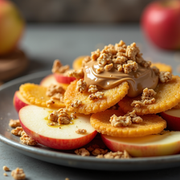10 Ways To Get My Child To Eat Healthy Food
- Jordan Akens
- Nov 7, 2018
- 3 min read
Updated: Jul 8, 2022
Nutritionist and World Around Us Child Care in-house cook Linda gives insight into her daily work and how she gets kids to eat vegetables, drink healthy juices and try new foods.

Every single day I deal with my picky eaters both big and small. Whether it is at home or here at work in my World Around Us Child Care kitchen, the complaints about freshly cooked colorful veggies never seem to stop.
Being a mother to three beautiful daughters and a grandmother to 4 adorable grandchildren I know what I am talking about when it comes to serving food that everyone likes. For the past 35 years I have been teaching my kids how good trying new foods can feel like.
Mothers constantly tell me how guilty they feel about their children's diets; they know how important it is to feed their kids healthy foods but they just don't know how to do it.
Today I want to share a few tips of how you can convince your little ones to eat what you so thoroughly prepared.
1. Make a Meal Plan
Being well organized and prepared when it comes to food is key to success. Stressing out about what to make for dinner results in chaos.
Children need three full meals, two snacks and lots of fluids throughout the day. Plan for that by having carrots, pretzels, yoghurt and water handy at all times so you don't rely on fast food.
When you go on trips bring a cooler stocked with a healthy balance of snacks.
2. Introduce New Foods Slowly
Don't worry if your first try to introduce some new stuff does not succeed right away. Children are new-food-phobics by nature. I tell all the kids that sometimes their taste buds first have to get used to new food before they like it. A little hero worship works wonders, too.
Let them know that their favorite athletes eat certain food to stay strong and healthy or that their comic hero eats something to activate superpowers.
3. Dip It
If your kids don't eat veggies experiment with dips and condiments. Serving some hummus, yoghurt-dressing or salsa along with thinly cut carrots and celery works miracles.
Make sure you use dips and condiments with real ingredients.
4. Sit Down For Dinners As A Family
If it isn't a tradition yet, make it one. Research shows that kids that sit down for family meals are less likely to get in serious trouble later on in life.
5. Include Your Kids In Cooking
If your kids are involved in the decision making and cooking process from the beginning on they will be more curious in eating what they have created. Start by taking them to the grocery store and help you pick out produce for a meal. Then teach them how to cut and cook the ingredients.
Making salads are a great way to trigger interest for veggies and fruits.
6. Sneak In Soy
Soy milk is an amazing source of phytochemicals. Try to use soy milk for recipes that call for regular cow milk such as oatmeal, sauces and mashed potatoes.
7. Eliminate Junk-Food From Your House
Remember that you are in charge of what comes into the house. If you reduce the amount of junk-food you automatically force your kids into eating more fruits, veggies, whole grain snacks and dairy products.
8. Integrate Treats
Nothing speaks against having less healthy food on certain occasions. Having buttery popcorn or ice-cream at the fair is one of life's pleasures. Make it a habit when visiting grandparents or going on vacation to stop for a snack at a fast food place afterwards. That keeps less healthy food from becoming forbidden and your kids will appreciate it even more. Keep in mind that what your children eat over time matters most.
9. Have Fun With Veggies
When preparing or eating food with your kids give veggies silly names like "dinosaur treat" or "baby trees" for broccoli. The more creative, the greater the variety of foods kids will eat.
When serving food form a smiley face with carrots, broccoli and corn. We do plenty of that stuff.
10. Let Kids Rate Food
Ask your kids to take three bites of all foods on their plate and have them rate it with numbers from 1-5. Serve them higher rated food (especially veggies) more frequently and integrate lower rated food into stews, smoothies, etc.
This lets your kids participate in the decision making process.





















Comments